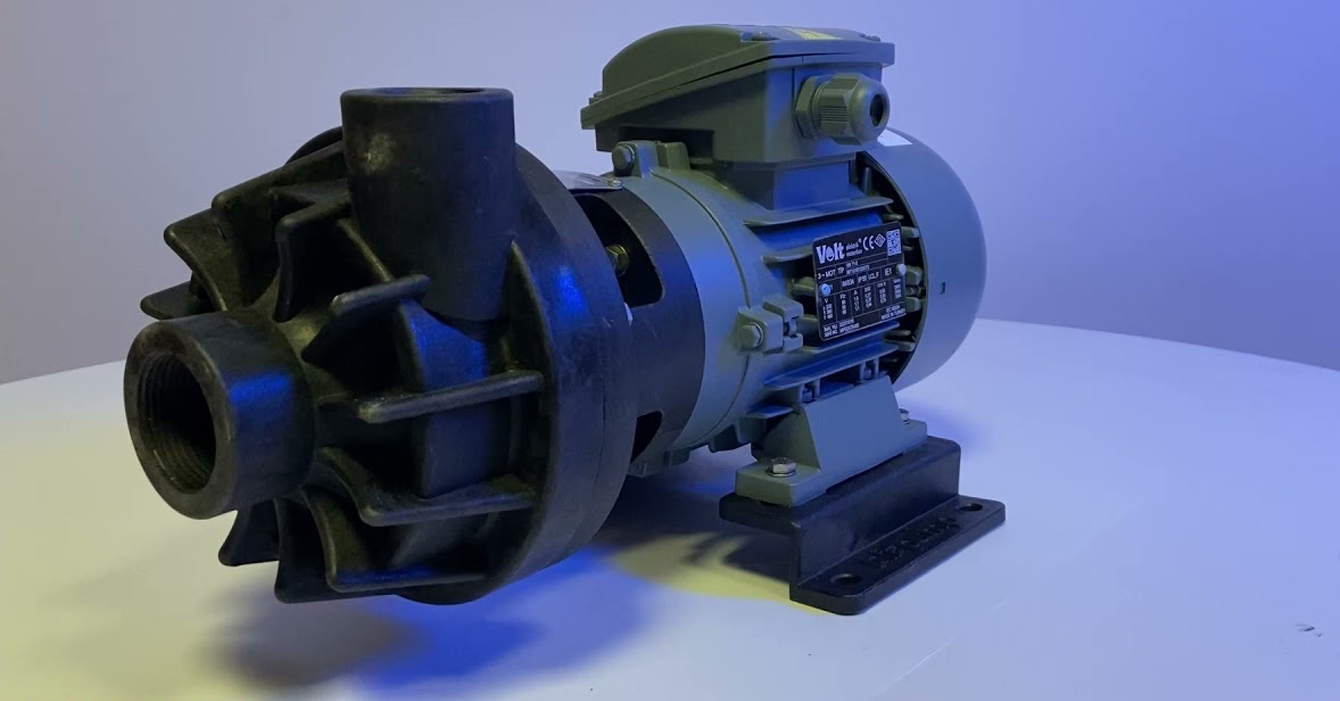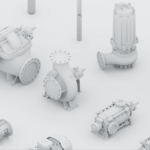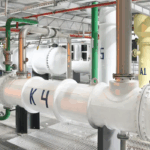Chemical pumps are designed to transport aggressive, toxic, highly viscous or hazardous liquids in a variety of industries. Their design and materials ensure safety, reliability and long service life even in the most demanding conditions.
The principle of operation of the chemical pump
Chemical pumps are of different types depending on the principle of operation:
- Centrifugal:
They use the rotation of the impeller to generate centrifugal force that moves the fluid. This type is suitable for transporting large volumes of liquids with low viscosity. - Diaphragm:
They work on the basis of the reciprocating motion of the membrane, creating pressure to move the fluid. Ideal for aggressive and viscous media. - Gears:
They use the interlocking teeth of two gears to create hermetically sealed chambers that transport fluid. Effective for viscous or thick liquids. - Magnetic clutch:
They transmit torque without direct contact between the drive and the impeller, which eliminates the risk of leaks.
Areas of application
- Chemical industry:
Pumping acids, alkalis, organic solvents, reagents and polymers. - Oil and gas industry:
Transportation of aggressive petrochemical products such as sulfuric acid, alkalis or bitumen. - Pharmaceuticals:
Transportation of sterile and toxic substances in compliance with hygienic requirements. - Wastewater treatment:
Working with reagents to neutralize or purify water. - Energy:
Transportation of coolants or chemical additives. - Food industry:
They are used for pumping chemical additives, disinfectants and other auxiliary substances.
Features of chemical pumps
- Materials of execution:
The body and main elements are made of materials resistant to corrosion and aggressive substances: stainless steel, Teflon (PTFE), polypropylene (PP), polyfluoroethylene (PVDF), ceramics. - Airtightness:
Magnetic coupling or diaphragm pumps ensure maximum tightness, preventing leakage of hazardous substances. - Resistant to high temperatures and pressures:
Chemical pumps can handle liquids with temperatures up to 200°C and pressures up to 25 bar, depending on the model. - Compatible with aggressive liquids:
The pump is designed to transport chemically active substances without damaging the equipment. - Protection system:
Many models are equipped with overheating, dry running and pressure drop protection functions, which increases their reliability. - Easy to clean:
The design includes elements that make it easy to clean and maintain the pump.
How to choose the right chemical pump?
- Liquid properties:
- Liquid viscosity, density, and temperature.
- Chemical composition and aggressiveness of the environment.
- Type of pump:
- Centrifugal: For large volumes and liquids with low viscosity.
- Diaphragm: For viscous, sensitive or aggressive liquids.
- Gear: For thick and viscous media.
- Magnetic clutch: For liquids with high toxicity or volatile substances.
- Body material:
Choose a material that is resistant to the chemical composition of the fluid. For example, polymers for acids, stainless steel for mildly acidic environments. - Operating conditions:
Consider the operating pressure, temperature, and possible abrasive particles in the fluid. - Additional features:
The need for dry run protection, self-cleaning systems (CIP/SIP) or automation. - Productivity:
Calculate the required pumping volume and head.

























































